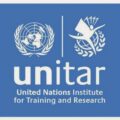Training Assistant – Social Development
JOB DETAIL
Under the supervision of the Director of the Division for People, the Training Assistant will be responsible for the following duties:
Contribute towards the preparation and roll-out of the Division’s activities by:
- Conducting social and policy research and evaluation activities in a wide range of thematic areas related to social development and inclusion;
- Monitoring and assessing project implementation;
- Reviewing and implementing feed-back and recommendations;
- Incorporating detailed research and analysis into reports, project documents and training activities;
- Supporting the development, packaging and implementation of online training and materials, including application of new technologies to the development of online training.
- Preparing key data, such as programme statistics and evaluation reports;
- Assisting in evaluation processes, including the compilation of data and elaboration of reports;
- Performing other tasks to ensure effective programme development and implementation.
Support in the identification of new opportunities for the Division, with a particular view to leveraging emerging technologies, through the following duties:
- Conducting market research to identify new development opportunities;
- Identifying and implementing new innovations and technologies that yield competitive advantage;
- Providing innovative and creative input into the development of new activities;
- Monitoring developments in the field of emerging technologies, liaising with staff of international organizations, donors, and other stakeholders in view of identifying needs and responding to requests for the design and development of projects, activities and initiatives.
- Staff in the Division, and other units of the Institute;
- Diplomatic staff of Permanent Missions accredited to the United Nations Offices;
- Officers and technical staff in all CIFAL Centres;
- Counterparts working in other international organizations, including those in the United Nations system;
- Counterparts working in organizations that are Partners and/or Donors of the Division.
Support is provided to the Division, predominantly with the development of key project documents and research papers; efficient and effective support to the implementation of the Division’s activities and services as enshrined in its work plan; effective communication with internal and external counterparts to achieve prescribed results.
Professionalism – Shows pride in work and in achievements; Demonstrates professional competence and mastery in the field of training and capacity building; Is conscientious and efficient in meeting commitments, observing deadlines and achieving results; Is motivated by professional rather than personal concerns; Shows persistence when faced with difficult problems or challenges; Remains calm in stressful situations.
Planning & Organizing – Develops clear goals that are consistent with agreed strategies. Identifies priority activities and assignments. Adjusts priorities as required. Allocates appropriate amount of time and resources for completing work. Uses time efficiently.
Commitment to continuous learning – Willingness to keep abreast of new developments in the field of training and knowledge management activities. Shows willingness to learn from others. Seeks feedback to learn and improve.
Communication – Speaks and writes clearly and effectively. Tailors language, tone, style and format to match audience. Openness in sharing information and keeping people informed.
Creativity – Actively seeks to improve programmes or services. Offers new and different options to solve problems or meet partners/donors needs. Takes an interest in new ideas and new ways of doing things.
Teamwork – Works collaboratively with colleagues to achieve organizational goals.
Client orientation – Considers all those to whom services are provided to be “clients” and seeks to see things from clients’ point of view; establishes and maintains productive partnerships with clients by gaining their trust and respect; identifies clients’ needs and matches them to appropriate solutions; monitors ongoing developments inside and outside the clients’ environment to keep informed and anticipate problems; keeps clients informed of progress or setbacks in projects; meets timeline for delivery of products or services to client.

